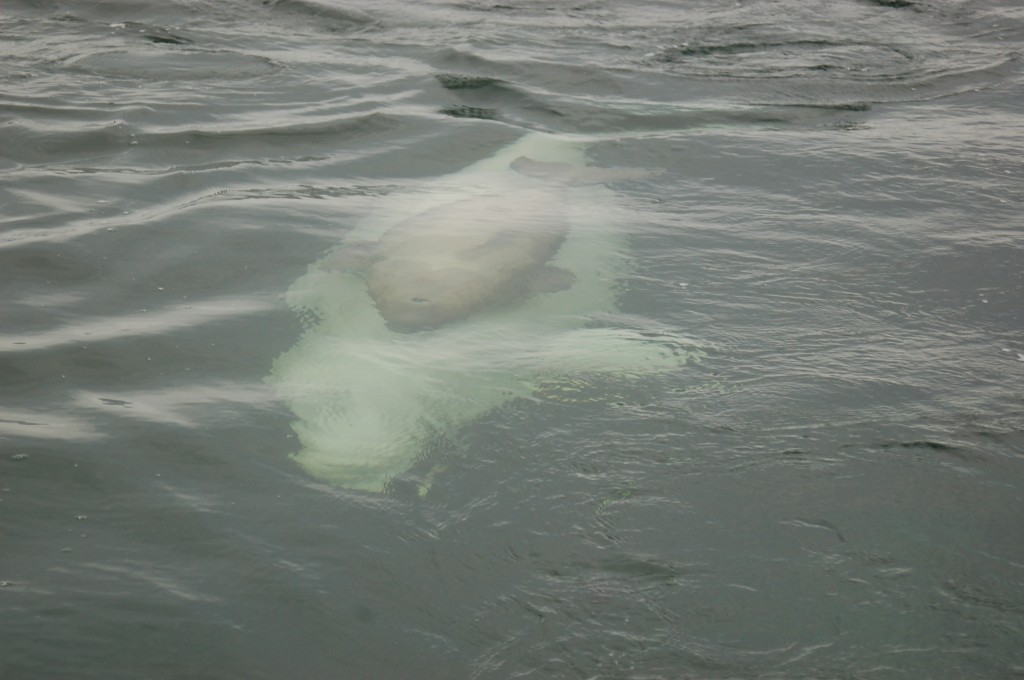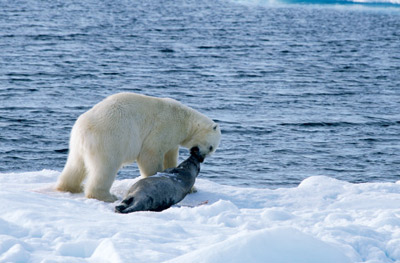Churchill Sunday Morning Photo
This beautiful sunset shot with the inukshuk by Alex de Vries – Magnifico in Churchill is a great way to start this Sunday. Sunsets in the spring and fall in Churchill seem to have a little better color to them. Enjoy!

This beautiful sunset shot with the inukshuk by Alex de Vries – Magnifico in Churchill is a great way to start this Sunday. Sunsets in the spring and fall in Churchill seem to have a little better color to them. Enjoy!

Churchill beluga whale watching operators breathed a collective sigh of relief when the Department of Fisheries and Oceans ruled that the recently proposed minimum distance regulations for observing belugas on the Churchill River and Hudson Bay would not be enforced for the coming summer season. A proposed 50 meter restriction was to apply to all vessels observing whales on the water. DFO was citing research recently conducted with results showing minimal contact with whales would be beneficial to them in their feeding and calving behavior.
Researchers have obviously not spent much time observing the whales interacting with tour operators vessels in Churchill. Having spent over 10 seasons with groups of travelers out on the Churchill River and Hudson Bay, I have seen the behavior in just about every situation many times over. Beluga whales are curious beings and when they are not feeding or tending to their calves they love to approach and follow boats of all sizes. Zodiacs in particular are favorites for the whales with their low throttle. The whales seem happy settling into the slipstream created by the outboard motor and often approach close enough without prompting for one to reach in the water and touch the melon of a beluga.
So, without hesitation, I can firmly state that beluga whales are safe around whale watching boats in Churchill. They are adept enough to avoid a boat traveling at fairly high speed though this practice is quite unusual for anyone out to view the whales. The video below highlights the behavior that beluga whales exhibit with no fear. Good job DFO!
Rhonda Reid in Churchill has been getting some amazing sightings an photos of the incoming migratory birds of Churchill so I thought we should just keep getting them out to you also! This is a really special time of year with Ice still in the bay and warmer weather. Birds are arriving and soon the beluga whales will be in the Churchill River and all along the coast in the Hudson Bay! Stay tuned for more updates.

Whimbrel in the grass in Churchill. Rhonda Reid photo.

Rough legged hawk. Rhonda Reid photo.

Sandhill crane. Rhonda Reid Churchill.

Surf scoters on the Hudson Bay. Rhonda Reid photo.
In 1976 the Churchill River water flow was diverted into the Nelson River at Missi falls at the mouth of South Indian Lake. This diversion, caused the Churchill River to have 15% of the original flow and created controversy stemming mainly from Cree and aboriginal groups concern over their native lands resources.
Affects on wildlife habitat and communities along the river to the north have never been adequately measured so affects on fish and the beluga whale population are relatively unknown. In Churchill, a weir and marina was constructed as part of the mitigation process by Manitoba Hydro. Although the observation tower the marina gives a nice view of the inlet off the river, the marina gets minimal usage. The weir allows the regulation of water levels south of that point for fishing and boating excursions. The beluga whale population ventures shorter distances up-river in summertime due to the tidal flow and shallow water. This might have had some affects on the population or it may have caused some whales to change habitat location and venture to other estuaries with warm rivers flowing into them. When belugas give birth and nurture their young they have an easier time with the moderate temperature warm waters flowing from the south.

Observation tower at the Churchill marina. Steve Selden photo.
I can’t imagine what the flow of the Churchill River would be like at 85% more pressure. Guiding over a decade of Churchill Arctic summer seasons I have experienced just about every type of conditions on the river and in the Hudson Bay. Although higher water flow would not have a profound affect within the main part of the river, the mouth and inlets would be very different at tidal changes. It’s very tricky at times to maneuver through the mouth of the river due to the currents and topography below. With more flow this could be easier or harder but would most likely have a bearing on fish and whales. Inlets and calving/ nurseries would be larger and deeper farther up-river…that is a surety.

A baby calf beluga swimming in his mother’s slipstream to stay close. Steve Selden photo.
The affects on southern communities associated with the diversion have been quite harmful in many instances. South Indian Lake was forced to relocate and has since lost most of their original one million pound whitefish production…down to 100,000 pounds at last count.In the end, the benefits of the diversion and Nelson River power plants output have not been without issues. Having to ship the power to far southern communities has taken more resources and money than originally planned. The original water levels negotiated by Manitoba hydro have been disregarded and a push to adopt the newer levels by law is underway. One has to wonder, as with all these massive projects that alter our natural environment, are the benefits worth the effects felt by our wildlife populations?
Seals, particularly ringed and bearded seals, don’t care too much about the polar bear’s plight of reduced sea ice. True, seals need the ice – pack and ice – floes to build their dens to birth and raise their young. However, they would not mind one bit if there were no polar bears around to stalk them in their blowholes and crash through their dens on the ice in order to devour their young and occasionally adults as well. No, as far as seals think, polar bears could disappear all-together and they wouldn’t have to keep one eye open constantly while they are dozing on the ice in between dives below the surface.
What seals don’t know is they also need to worry about global warming and reduced sea ice in the Hudson Bay and other far northern Arctic regions. Without the ice surface there would be nowhere to build their dens and rear their young near accessible food sources in the ocean. Well, who knows, maybe they do know this and we’re not giving them enough credit. Anyway, the end result is, without sea ice, polar bears cannot hunt their staple prey of seals and seals cannot rear their young pups that are eaten by polar bears. The complex web of life.

Polar bear with a seal kill. Rinie Van Meurs photo.
Polar bears also take adult seals by getting the scent from a distant blowhole utilized by seals to surface periodically. Seals form these access holes in the fall when the ice is softer and less thick. They maintain them throughout the colder months by constantly surfacing and descending in order to prevent ice layers from forming in the hole. Polar bears get very low as they approach the hole and sometimes even dive in to snatch the seal with their sharp, agile claws. When a bear emerges with the kill, they will often share with other polar bears that approach very timidly while nudging the hunter with their noses asking in a way to partake in the meal.

Polar bears gather to feed on a beached whale carcass. Daniel Cox/Natural Exposures photo.
Polar bears are opportunists. In essence they have the ability to find alternative food sources when needed if seals are unavailable. In recent years polar bears have been observed seemingly more active on land or in shallow coastal water hunting seals and beluga or other whales. Scientists wonder if this is a reaction to the shorter sea – ice season. Are polar bears adapting to changing climate conditions?
Only time will tell with regards to the polar bear’s ability to adapt to changing climate and ice conditions resulting from global warming. Seals will have to adapt as well in order to survive and propagate their species. Also, just maybe humans, the wildcard in the equation, can reduce carbon emissions to reverse the trends we are seeing now in the Arctic!